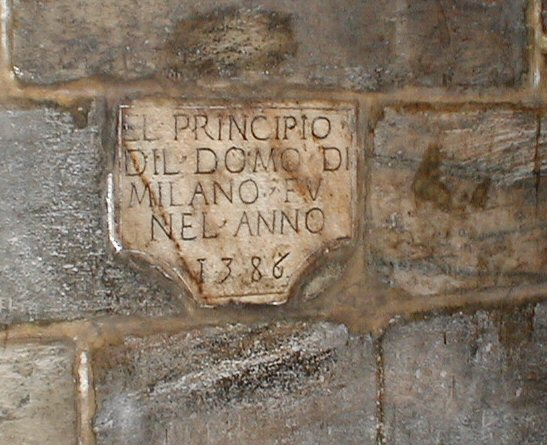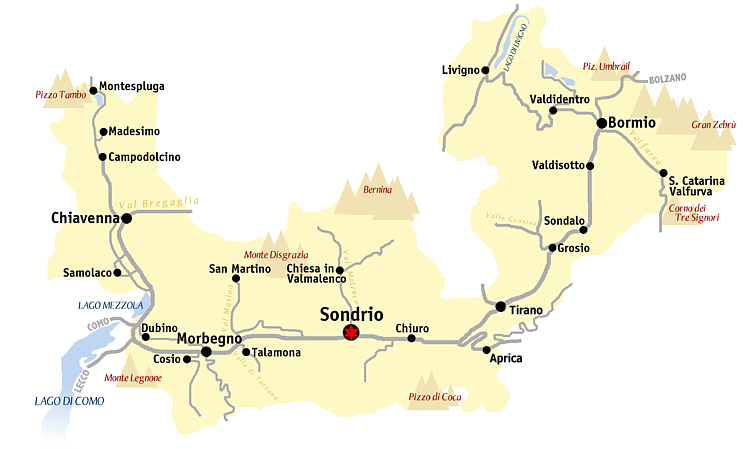|
Giacomo Parravicini
Giacomo Parravicini or Paravicini, also referred to as ''il Gianolo'' (5 June 1660 – 28 February 1729) was an Italian painter, active mainly in Milan and the Valtellina. Biography He was born in Caspano, a neighborhood of Civo, in the province of Sondrio, in north Lombardy. He may have journeyed to Rome to study with Carlo Maratta, or more likely was influenced by Maratta's large school of pupils, including Giorgio Bonola, who worked together with Parravicini in painting for the church of Sant'Alessandro in Zebedia in Milan. Between 1687 and 1688, he painted for the choir and chapel of the archbishop's chapel in Caspano. He also painted for the parish church of Chiuro, and churches in Delebio, San Carlo and Traona. page 259. He painted some of the |
Milan
Milan ( , , Lombard language, Lombard: ; it, Milano ) is a city in northern Italy, capital of Lombardy, and the List of cities in Italy, second-most populous city proper in Italy after Rome. The city proper has a population of about 1.4 million, while its Metropolitan City of Milan, metropolitan city has 3.26 million inhabitants. Its continuously built-up List of urban areas in the European Union, urban area (whose outer suburbs extend well beyond the boundaries of the administrative Metropolitan cities of Italy, metropolitan city and even stretch into the nearby country of Switzerland) is the fourth largest in the EU with 5.27 million inhabitants. According to national sources, the population within the wider Milan metropolitan area (also known as Greater Milan), is estimated between 8.2 million and 12.5 million making it by far the List of metropolitan areas of Italy, largest metropolitan area in Italy and List of metropolitan areas in Europe, one of ... [...More Info...] [...Related Items...] OR: [Wikipedia] [Google] [Baidu] |
Italian Male Painters
Italian(s) may refer to: * Anything of, from, or related to the people of Italy over the centuries ** Italians, an ethnic group or simply a citizen of the Italian Republic or Italian Kingdom ** Italian language, a Romance language *** Regional Italian, regional variants of the Italian language ** Languages of Italy, languages and dialects spoken in Italy ** Italian culture, cultural features of Italy ** Italian cuisine, traditional foods ** Folklore of Italy, the folklore and urban legends of Italy ** Mythology of Italy, traditional religion and beliefs Other uses * Italian dressing, a vinaigrette-type salad dressing or marinade * Italian or Italian-A, alternative names for the Ping-Pong virus, an extinct computer virus See also * * * Italia (other) * Italic (other) * Italo (other) * The Italian (other) The Italian may refer to: * ''The Italian'' (1915 film), a silent film by Reginald Barker * ''The Italian'' (2005 film), a Russian film by A ... [...More Info...] [...Related Items...] OR: [Wikipedia] [Google] [Baidu] |
18th-century Italian Painters
The 18th century lasted from January 1, 1701 ( MDCCI) to December 31, 1800 ( MDCCC). During the 18th century, elements of Enlightenment thinking culminated in the American, French, and Haitian Revolutions. During the century, slave trading and human trafficking expanded across the shores of the Atlantic, while declining in Russia, China, and Korea. Revolutions began to challenge the legitimacy of monarchical and aristocratic power structures, including the structures and beliefs that supported slavery. The Industrial Revolution began during mid-century, leading to radical changes in human society and the environment. Western historians have occasionally defined the 18th century otherwise for the purposes of their work. For example, the "short" 18th century may be defined as 1715–1789, denoting the period of time between the death of Louis XIV of France and the start of the French Revolution, with an emphasis on directly interconnected events. To historians who expand ... [...More Info...] [...Related Items...] OR: [Wikipedia] [Google] [Baidu] |
17th-century Italian Painters
The 17th century lasted from January 1, 1601 ( MDCI), to December 31, 1700 ( MDCC). It falls into the early modern period of Europe and in that continent (whose impact on the world was increasing) was characterized by the Baroque cultural movement, the latter part of the Spanish Golden Age, the Dutch Golden Age, the French ''Grand Siècle'' dominated by Louis XIV, the Scientific Revolution, the world's first public company and megacorporation known as the Dutch East India Company, and according to some historians, the General Crisis. From the mid-17th century, European politics were increasingly dominated by the Kingdom of France of Louis XIV, where royal power was solidified domestically in the civil war of the Fronde. The semi-feudal territorial French nobility was weakened and subjugated to the power of an absolute monarchy through the reinvention of the Palace of Versailles from a hunting lodge to a gilded prison, in which a greatly expanded royal court could be more easily ... [...More Info...] [...Related Items...] OR: [Wikipedia] [Google] [Baidu] |
1729 Deaths
Seventeen or 17 may refer to: * 17 (number), the natural number following 16 and preceding 18 * one of the years 17 BC, AD 17, 1917, 2017 Literature Magazines * ''Seventeen'' (American magazine), an American magazine * ''Seventeen'' (Japanese magazine), a Japanese magazine Novels * ''Seventeen'' (Tarkington novel), a 1916 novel by Booth Tarkington *''Seventeen'' (''Sebuntiin''), a 1961 novel by Kenzaburō Ōe * ''Seventeen'' (Serafin novel), a 2004 novel by Shan Serafin Stage and screen Film * ''Seventeen'' (1916 film), an American silent comedy film *''Number Seventeen'', a 1932 film directed by Alfred Hitchcock * ''Seventeen'' (1940 film), an American comedy film *'' Eric Soya's '17''' (Danish: ''Sytten''), a 1965 Danish comedy film * ''Seventeen'' (1985 film), a documentary film * ''17 Again'' (film), a 2009 film whose working title was ''17'' * ''Seventeen'' (2019 film), a Spanish drama film Television * ''Seventeen'' (TV drama), a 1994 UK dramatic short starring Chr ... [...More Info...] [...Related Items...] OR: [Wikipedia] [Google] [Baidu] |
1660 Births
Year 166 ( CLXVI) was a common year starting on Tuesday (link will display the full calendar) of the Julian calendar. At the time, it was known as the Year of the Consulship of Pudens and Pollio (or, less frequently, year 919 ''Ab urbe condita''). The denomination 166 for this year has been used since the early medieval period, when the Anno Domini calendar era became the prevalent method in Europe for naming years. Events By place Roman Empire * Dacia is invaded by barbarians. * Conflict erupts on the Danube frontier between Rome and the Germanic tribe of the Marcomanni. * Emperor Marcus Aurelius appoints his sons Commodus and Marcus Annius Verus as co-rulers ( Caesar), while he and Lucius Verus travel to Germany. * End of the war with Parthia: The Parthians leave Armenia and eastern Mesopotamia, which both become Roman protectorates. * A plague (possibly small pox) comes from the East and spreads throughout the Roman Empire, lasting for roughly twenty years. ... [...More Info...] [...Related Items...] OR: [Wikipedia] [Google] [Baidu] |
Crema, Lombardy
Crema (; Cremasco: ) is a city and ''comune'' in the province of Cremona, in the region of Lombardy in northern Italy. It is built along the river Serio at from Cremona. It is also the seat of the Catholic Bishop of Crema, who gave the title of city to Crema. Crema's main economic activities traditionally (since the 11th century) related to agriculture, cattle breeding and making wool, but its manufactures in later centuries include cheese, iron products and cotton and wool textiles. Crema hosts the Computer Science Department of the University of Milan. History Crema's origins have been linked to the Lombard invasion of the 6th century CE, the name allegedly deriving from the Lombard term ''Krem'' meaning "little hill", though this is doubtful since it does not lie significantly above the surrounding countryside. Other linguistic roots may suggest an older origin, in particular the Indo-European root meaning a boundary (cf. Ukraine, crêt). Other authorities trace its founda ... [...More Info...] [...Related Items...] OR: [Wikipedia] [Google] [Baidu] |
Milan Cathedral
Milan Cathedral ( it, Duomo di Milano ; lmo, Domm de Milan ), or Metropolitan Cathedral-Basilica of the Nativity of Saint Mary ( it, Basilica cattedrale metropolitana di Santa Maria Nascente, links=no), is the cathedral church of Milan, Lombardy, Italy. Dedicated to the Nativity of St Mary (''Santa Maria Nascente''), it is the seat of the Archbishop of Milan, currently Archbishop Mario Delpini. The cathedral took nearly six centuries to complete: construction began in 1386, and the final details were completed in 1965. It is the largest church in the Italian Republic—the larger St. Peter's Basilica is in the State of Vatican City, a sovereign state—and possibly the second largest in Europe and the third largest in the world (its size and position remain a matter of debate). History Milan's layout, with streets either radiating from the Duomo or circling it, reveals that the Duomo occupies what was the most central site in Roman Mediolanum, that of the public bas ... [...More Info...] [...Related Items...] OR: [Wikipedia] [Google] [Baidu] |
Traona
Traona is a ''comune'' (municipality) in the Province of Sondrio in the Italian region Lombardy, located about northeast of Milan and about west of Sondrio. As of 31 December 2004, it had a population of 2,314 and an area of .All demographics and other statistics: Italian statistical institute Istat. Traona borders the following municipalities: Cercino, Civo, Cosio Valtellino, Mello, Morbegno, Novate Mezzola Novate Mezzola is a ''comune'' (municipality) in the Province of Sondrio in the Italian region Lombardy, located about north of Milan and about west of Sondrio, on the border with Switzerland. As of 31 December 2004, it had a population of 1,71 .... Demographic evolution Colors= id:lightgrey value:gray(0.9) id:darkgrey value:gray(0.8) id:sfondo value:rgb(1,1,1) id:barra value:rgb(0.6,0.7,0.8) ImageSize = width:455 height:303 PlotArea = left:50 bottom:50 top:30 right:30 DateFormat = x.y Period = from:0 till:3000 TimeAxis = orientation:vertical Ali ... [...More Info...] [...Related Items...] OR: [Wikipedia] [Google] [Baidu] |
Valtellina
Valtellina or the Valtelline (occasionally spelled as two words in English: Val Telline; rm, Vuclina (); lmo, Valtelina or ; german: Veltlin; it, Valtellina) is a valley in the Lombardy region of northern Italy, bordering Switzerland. Today it is known for its ski center, hot spring spas, bresaola, cheeses (in particular Bitto, named after the river Bitto) and wines. In past centuries it was a key alpine pass between northern Italy and Germany and control of the Valtellina was much sought after, particularly during the Thirty Years' War as it was an important part of the Spanish Road. Geography The most important comune of the valley is Sondrio; the others major centers are Aprica, Morbegno, Tirano, Bormio and Livigno. Although Livigno is on the northern side of the alpine watershed, it is considered part of Valtellina as it falls within the province of Sondrio. History Antiquity and the middle ages The region was conquered in 16 BC by the Romans. By the 5 ... [...More Info...] [...Related Items...] OR: [Wikipedia] [Google] [Baidu] |
Delebio
Delebio (''Delébi'' in lombard) is a ''comune'' (municipality) in the Province of Sondrio in the Italian region Lombardy, located about northeast of Milan and about west of Sondrio. Delebio borders the following municipalities: Andalo Valtellino, Colico, Dubino, Pagnona, Piantedo, Premana, Rogolo. It was the location of the Battle of Delebio The Battle of Delebio was a battle of the Wars in Lombardy. It occurred on 18 and 19 November 1432, near Delebio, in the Valtellina. It was an aftermath of the occupation of Brescia and the Valle Camonica by the armies of the Republic of Venice, ... in 1432. References Cities and towns in Lombardy {{Sondrio-geo-stub ... [...More Info...] [...Related Items...] OR: [Wikipedia] [Google] [Baidu] |




